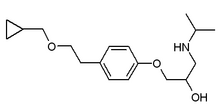Results of in-vivo studies that were presented at the recent annual meeting of the Association for Research in Vision and Ophthalmology (ARVO) highlight several key findings about the ways in which betaxolol (Betoptic) provides neuroprotection and may help preserve sight in patients who have glaucoma.
Topically applied, betaxolol reaches the retina in sufficient concentrations to blunt some of the effects of ischemia. Betaxolol has been proven to block calcium influx into retinal ganglion cells. This increases perfusion to the optic nerve and actually provides neuroprotection. Other findings show that betaxolol also interacts directly with neuronal sodium channels to reduce sodium influx and indirectly reduce calcium influx.
"While glaucoma has been thought of as a disease of intraocular pressure for several decades, the significance of glaucoma-related neuroprotection for preservation of sight is increasingly evident," according to Neville Osborne, Ph.D., of Oxford University in England.
Dr. Osborne also says that "Growing research into the role of blood flow and chemical activity in the death of retinal ganglion cells continues to demonstrate the visual field benefits that are associated with the neuroprotective properties of betaxolol."
Copyright Boucher Communications, Inc. Jun 2000
Provided by ProQuest Information and Learning Company. All rights Reserved



